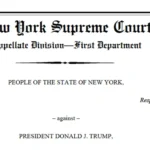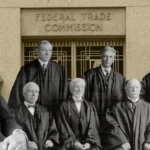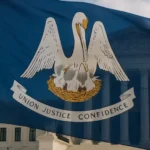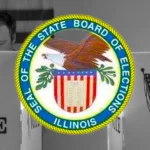
On April 22, the U.S. Supreme Court heard oral arguments in Mahmoud v. Taylor, a case involving the religious liberty implications when public school students are compelled to participate in lessons on gender and sexuality that violate their religious beliefs. Petitioners, a diverse group of concerned parents from Maryland, argued that the refusal of the school board to allow them to opt-out their children from teachings that violate their religious beliefs infringes on their First Amendment right to freely exercise their religion.
The Public Religion Research Institute (PRRI) recently identified Montgomery County as the most religiously diverse county in the United States.1 Petitioners include practicing Muslims, Orthodox Christians, and Roman Catholics—all of whom object to the forced instruction on radical gender and sexuality ideology for their young children.
Examples of the elementary school’s instruction at issue includes required storybooks that “celebrate gender transitions, explore Pride parades, and introduce same-sex romance between young children.”2 While the Montgomery County Board of Education (“Board”) initially assured parents they would be notified and could opt-out their children from such teachings, they later reneged on this promise.
When parents brought their objections to the Board, they were publicly accused of bigotry and labeled “white supremacists” by Board members.3
Petitioners filed suit under the Free Exercise Clause of the First Amendment, which reads “Congress shall make no law respecting an establishment of religion, or prohibiting the free exercise thereof . . . .”4 The district court denied them a preliminary injunction, a decision that the Fourth Circuit then affirmed. The Fourth Circuit ruled that there was no free-exercise burden because there was no evidence the “Board’s decision to not permit opt-outs compels the Parents or their children to change their religious beliefs.”5
The Fourth Circuit interpreted Supreme Court precedent to require some “coercive effect” before a government action can be determined to burden religious exercise.6 By setting such a high bar, this decision left unanswered the question of what, if any, actions by a public school would burden religious exercise. Petitioners argued that under this rule, “parents essentially surrender their right to direct the religious upbringing of their children by sending them to public schools.”7
During oral arguments, the Supreme Court appeared sympathetic to the parents’ case. Particularly at issue was what amounts to “exposure” in a classroom setting, and whether exposure, in and of itself, constitutes a burden on religious exercise. Justice Alito suggested that in one of the problematic storybooks, a same-sex marriage is portrayed with a “clear moral message” that “people who hold on to traditional religious beliefs don’t agree with.”8 In this instance, elementary schools are giving forced instruction on topics that are directly contrary to a family’s moral and religious beliefs, with the explicit message of “[n]o, you shouldn’t have any reservations about this.”9
Justices Barrett and Gorsuch echoed this idea. While questioning Mr. Alan Schoenfeld, who represented the Board, Justice Barrett opined that the “presentation of [an] idea as a fact,” rather than the mere “exposure to [an] idea” is different.10 These storybooks are saying “[t]his is the right view of the world. . . . This is how you should think about things. This is like 2 plus 2 is 4.”11 Justice Gorsuch added that teaching “some people think X, and X is wrong and hurtful and negative” is more than exposure.12
Justice Kavanaugh took issue with Mr. Schoenfeld on the Board’s argument that allowing religiously based opt-outs was not feasible: “I’m not understanding why it’s not feasible. The county had an opt-out. You said every other school board in the country has opt-outs for all sorts of things. And yet, for this one thing, they changed in midyear and say no more opt-outs.”13 The Board’s arguments are unworkable and rest on a pretextual claim of feasibility to justify what appears to be an effort at indoctrination—despite conceding that opt-outs are feasible for “every other school board in the country.”14
If the Court rules in favor of the parents, it will be an important step in safeguarding a parent’s right to influence the material their child is exposed to by the public school system. Under the current jurisprudence in the majority of circuits, parents are effectively forced to submit their children to religious and moral indoctrination—unless they can afford to spend tens of thousands of dollars on private school tuition.
The right of a parent to have a say in the instruction of his young child does not end when the child walks through the door of an elementary school. A ruling favorable to petitioners in Mahmoud v. Taylor will help protect this right.
Footnotes
- PRRI Staff, 2023 PRRI Census of American Religion, Public Religion Research Institute (Aug. 29, 2024), https://www.prri.org/research/census-2023-american-religion/. ↩︎
- Petition for Writ of Certiorari at 1, Mahmoud v. Taylor, No. 24-297 (U.S. Sept. 12, 2024). ↩︎
- Ibid. at 2. ↩︎
- U.S. Const. amend I. ↩︎
- Mahmoud v. McKnight, 102 F.4th 191, 209 (4th Cir. 2024). ↩︎
- Ibid. at 210. ↩︎
- Petition for Writ of Certiorari, supra, at 3. ↩︎
- Transcript of Oral Argument at 13–14, Mahmoud v. Taylor, No. 24-297 (U.S. Apr. 22, 2025). ↩︎
- Ibid. ↩︎
- Ibid. at 118. ↩︎
- Ibid. ↩︎
- Ibid. ↩︎
- Ibid. at 130. ↩︎
- Ibid. ↩︎
SUPPORT LANDMARK LEGAL FOUNDATION
We are truly facing existential threats to our individual rights and liberties, the Constitution, and our national character. If unchallenged, this assault on our very way of life will ruin our great nation. With your financial and moral support, Landmark is not going to let that happen without a fight. Will you join us?
JOIN OUR MAILING LIST
Never miss an update from Landmark Legal Foundation as we continue the fight to preserve America’s principles and defend the Constitution from the radical left.





